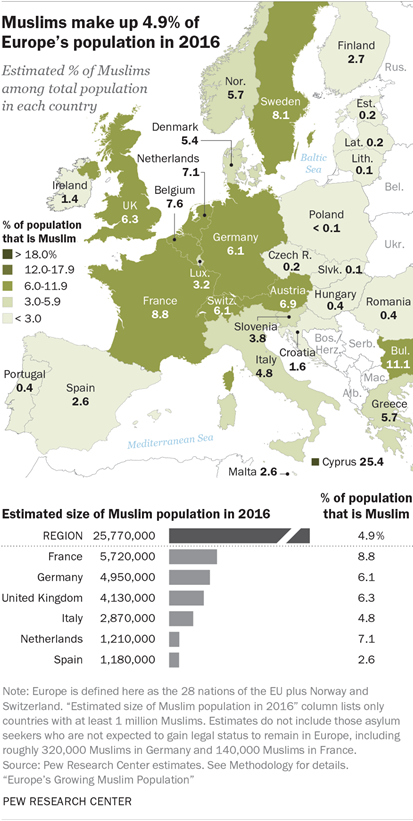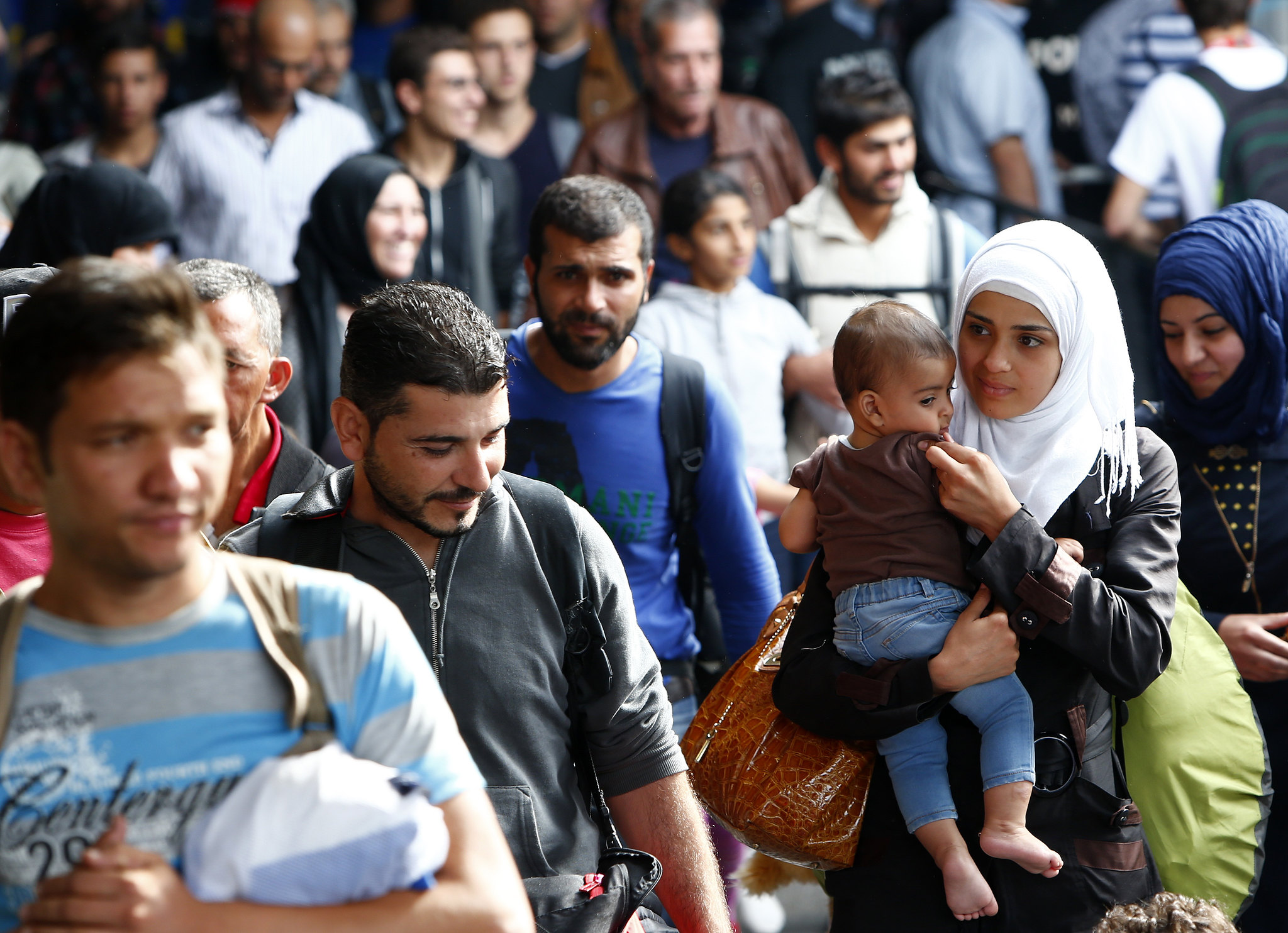A major study by the Pew Research Center shows how Muslims are projected to increase relative to Europe’s overall population.
The number of Muslims in Europe is projected to rise from just over 25 million in 2016, to between 35 million and 75 million by 2050. As a proportion of the continent’s overall population, that represents an increase from around five percent to a figure ranging from 7.5 percent to 14 percent.
The Washington-based Pew Research Center’s analysis of Europe’s Muslim population follows a record influx of people fleeing conflict in Syria and other majority-Muslim countries in recent years, which prompted a debate about immigration and security policies.
A diverse, unevenly spread population
The think-tank's study covers the EU’s 28 countries – including the UK despite Brexit – as well as Norway and Switzerland. The estimates draw on Pew’s own analysis as well as census data and other sources.
Pew acknowledges that “Europe’s Muslim population is diverse” with varying degrees of religious commitment and belief, but says such factors are outside the scope of its report.
Cyprus was found to have the highest share of Muslims in the EU (25.4 percent), due largely to the Turkish Cypriot community in the north of the island.
In contrast, Muslim populations of less than 10,000 meant that Poland and the Baltic states barely registered on the scale.
The report found that Germany was the top destination for Muslim refugees between 2010 and 2016, whereas the UK took in the highest number of regular Muslim migrants.
Syria was the top country of origin for refugees and all Muslim migrants to Europe. The next largest sources of refugees – Afghanistan and Iraq – are also conflict zones, with overwhelming Muslim-majority populations.
Europe's Muslim population set to grow regardless of migration levels
The research centre sets out three different projections for the coming decades, according to varying estimates of future migration levels. It stresses that unknown factors make these impossible to predict precisely.
A major conclusion is that even if all migration into Europe were to stop (“zero” migration scenario), the continent’s Muslim population would likely rise from the current level of 4.9 percent to 7.4 percent by 2050 – because on average Muslims are younger and have higher fertility than other Europeans.
A “high” migration scenario imagines that record refugee flows into Europe between 2014-16 continue into the future with the same religious composition, along with regular migrant arrivals. It projects that the proportion of Muslims in Europe could nearly triple to 14 percent by 2050 – still considerably smaller than other groups.
A “medium” scenario, assuming refugee flows stop but that migrants continue to arrive for reasons other than seeking asylum, says Muslims could reach 11.2 percent of Europe’s population in three decades’ time.
Europe’s non-Muslims, the report says, are expected to decline in total number in each scenario. The continent’s overall population could “decline considerably” (“zero” migration scenario), or “grow modestly” (“high” migration).
Germany the top destination for Muslim refugees
The impact of the scenarios is uneven across different European countries, depending on government policies and the varying numbers of Muslim refugees arriving to date.
Nations that have received relatively large numbers are projected to experience the biggest changes under the “high” migration scenario. Germany might thus see its Muslim population rise from six percent to almost 20 percent of the overall total by 2050. Sweden would experience an even greater impact: its Muslim population could increase to over 30 percent, from eight percent in 2016 (a five-fold increase in terms of the number of Muslims).
The countries projected to experience the biggest changes in the “medium” migration scenario, such as the UK, tend to have received the highest numbers of “regular” Muslim migrants. The “zero” migration scenario envisages the most significant change in countries such as France, Italy and Belgium.
In 2016 France and Germany had the highest number of Muslims in Europe, but the research centre says the UK would surpass them by 2050 in a "medium" migration scenario due to its high intake of "regular" Muslim migrants.
In contrast, "high" migration would see Germany have by far Europe's highest number of Muslims by the middle of the century - 17.5 million, according to Pew.
- Migrants arriving in Munich, September 2015.
Central and Eastern Europe: 'hardly any change'
Although smaller European countries are expected to see Muslim populations grow significantly, others – including large nations like Poland – are projected to continue to have very few Muslims in 2050, in all scenarios. Even with “high” migration, Poland’s Muslims are expected to total no more than 60,000.
“Hardly any change (in Muslim population) is projected in any scenario in several Central and Eastern European countries, including Poland, Latvia and Lithuania,” says the report’s summary.
These projections make interesting reading given another recent Pew Research Center survey, which found that refugees from Iraq and Syria were perceived as a far greater threat in some countries where there were relatively few of them (Greece, Italy and Poland for example), than in countries such as Germany and Sweden, which had attracted large numbers.
The study would also appear to give the lie to some claims from Europe’s far-right, which has been gaining ground in several countries. Euronews’ Insiders programme recently spoke to one young activist in Hungary who claimed statistics showed that “in 50 or 60 years’ time, our continent’s population could be replaced, from an ethnic point of view… white people will disappear”.
Hungary received among Europe’s highest numbers of asylum applications from Iraq and Syrian refugees between 2010 and 2016.
The Pew Research Center says its latest report provides the first estimates of the growing size of Europe’s Muslim population since the wave of refugees between 2014 and 2016, and is part of a broader effort to project the population growth of religious groups around the world.














